 ISO 9001:2015 and ISO 14001:2015 Certified
ISO 9001:2015 and ISO 14001:2015 Certified
“Project Management Information System” to manage Schedule, Cost, Contracts, Design Deliverable, Quality, Physical Progress, Land Acquisition etc., for entire project life cycle.
Footprint of UG and Elevated stations reduced.
Extensive use of pre-cast elements in Elevated section.
There is a total of 23 TBMs working in the Chennai city for building the extensive network of underground tunnels of Phase II which includes new TBMs imported and TBMs remanufactured in India. These TBMs shall be launched and retrieved multiple times till completion from the shafts at various locations. The tunneling work in Corridor 3 underground section of 26.7 km is being executed through two contracts with 15 TBMs and is being exclusively funded by the Government of Tamil Nadu. The Tunnelling work in Corridor 4 underground section of 10.1 km is being executed through two contracts with 4 TBMs and is being funded by ADB. The Tunnelling work in Corridor 5 underground section 5.8 km with 4 TBMs is being funded by JICA.
CMRL will have a Double decker line & station standing in single pillar for a stretch of about 4 km. The double-decker stretch will have four stations developed at two levels, Alwarthirunagar, Valasaravakkam, Karambakkam and Alapakkam, and there will be common concourse (ticketing level) with two different platforms. To execute the same, a special Launching Girder is fabricated and ready for use.
Double Decker – 4 km (Alwarthirunagar, Valasaravakkam, Karambakkam and Alapakkam)
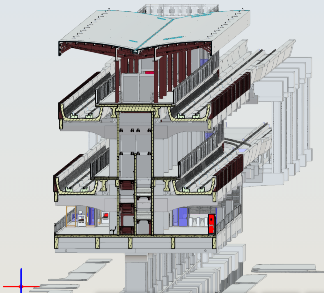
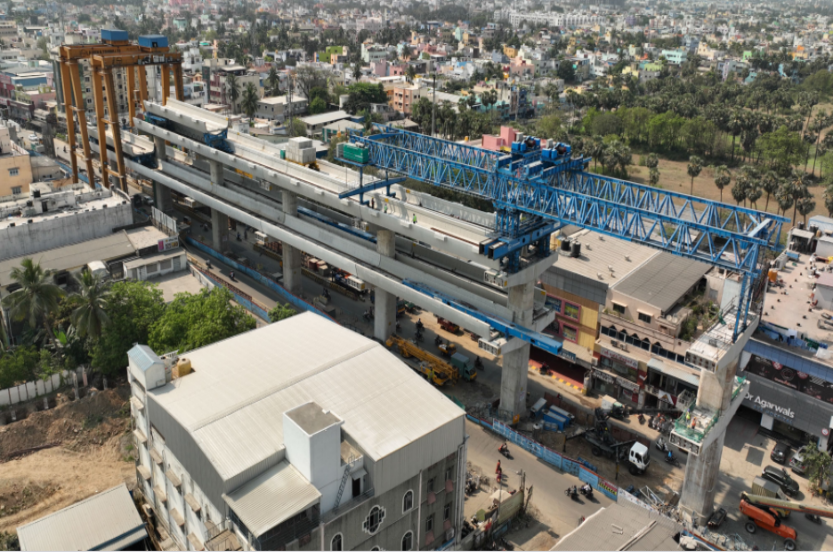
Many Balanced Cantilever method spans are adopted as special spans to suit the site conditions. Out of all, the most challenging location is Kathipara Junction. 5-span continuous BCM (1 x 58m + 2 x 100m + 1 x 95m + 1 x 60m) with 125m radius curve. Corridor 5 crosses Corridor 1 (Elevated) and Corridor 2 (Elevated) at Kathipara. Corridor 5 viaduct height is 31 m from Ground level. Road Flyover at level One, Corridor 1 at level Two, Corridor 2 at level Three, Corridor 5 at level Four.
Kathipara Junction (BCM) – 413 m -125 m curve – 5 span
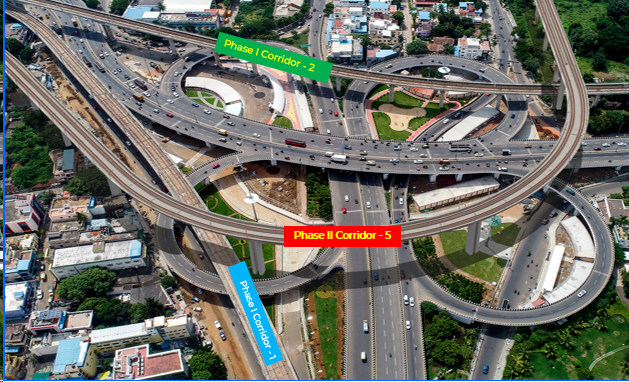
Integrating with State Highway flyover at Thoraipakkam, Sholinganallur, Kattupakkam, Majambakkam & MIOT flyover location.
Integrated structure with State highway
Kattupakkam
MIOT
Thoraipakkam
Sholinganallur
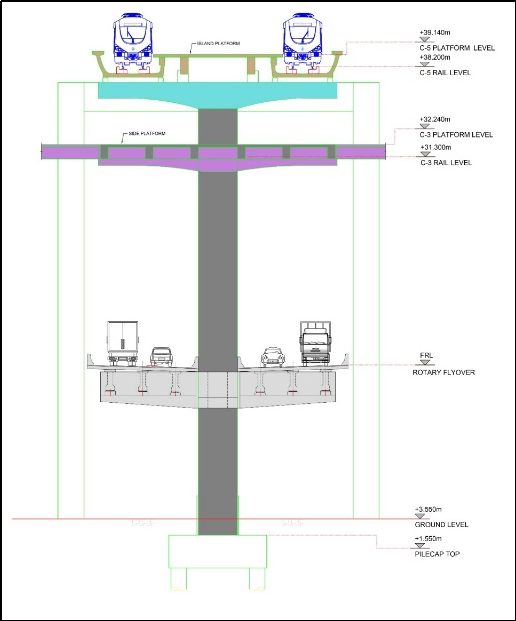
Stacked station:
CMRL has planned to go with underground stations with a stacked-up platform design at locations where the width of the roads is as narrow as 10m. Pattalam, Thirumayilai, Kutchery, Alwarpet, and Bhardhidhasan road stations are with stacked tunnels. In Corridor 3, the Thirumayilai underground interchange station will be constructed at a depth of 38.79 m from street level (35 m up to rail level) and will have 4 levels. The size of the station box will be 155 m in length, and 11 m in width. There will be a total of 4 entries/exits to the station from street level. To facilitate passengers to reach the station smoothly, a total of 12 escalators and 3 lifts will be available from street level. In Corridor 4, Thirumayilai underground station will be constructed at a depth of 26m from street level and will have 3 levels. The size of the station box will be 152 m in length, and 19.7m in width. There will be a total of 2 entries/exits to the station from street level. To facilitate passengers to reach the station smoothly, a total of 12 escalators and 3 lifts will be available from street level.
Stacked Station- 5 nos (Pattalam, Thirumayilai, Kutchery, Alwarpet, Bharathidasan Road)
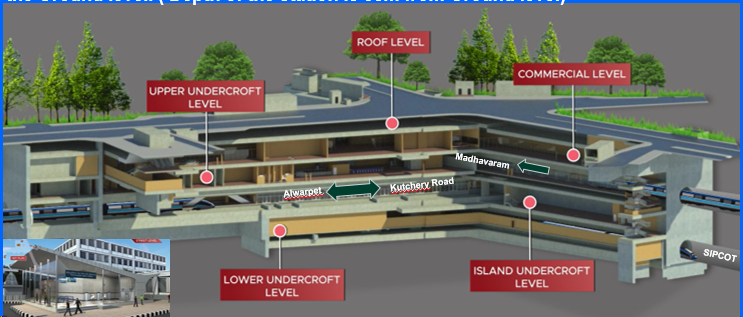
Intersection of Tunnel:
At Kilpauk, Thousand Light, and Nandanam, Phase II tunnels are passing below the Phase I running tunnels. More challenging to execute the same.
Intersection of Tunnel at existing Phase 1 Corridor (Phase II tunnel below Phase I tunnel)
Crossing of Adyar River:
Corridor 3 crosses the Adyar River near Adyar Junction (UG). The Crown of the Tunnel is 15 m below the bed level.
Crossing of Adyar River:
As a part of Multi-Modal Integration, the Phase-II Network will be integrated with other public transport modes namely Suburban Rail, MRTS, City Bus service, etc. at 21 different locations to ensure hassle-free and seamless connectivity.
Last Updated On : July 15, 2024

